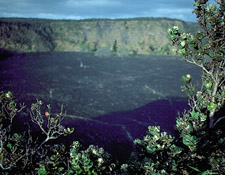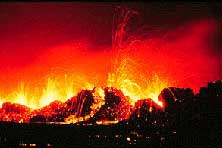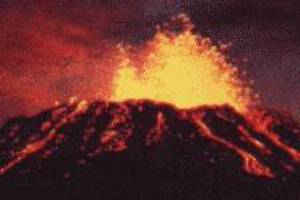
Kilauea -- Perhaps the World's
Most ActiveVolcano
Kilauea is the youngest and southeastern most volcano on the Big Island of Hawai`i. TopographicallyKilauea appears as only a bulge on the southeastern flank of Mauna Loa, and so for many years Kilauea was thought to be a mere satellite of its giant neighbor, not a separate volcano. However, research over the past few decades shows clearly that Kilauea has its own magma-plumbing system, extending to the surface from more than 60 km deep in the earth.
In fact, the summit of Kilauea lies on a curving line of volcanoes that includes Mauna Kea and Kohala and excludes Mauna Loa. In other words, Kilauea is to Mauna Kea as Lo`ihi is to Mauna Loa. Hawaiians used the word Kilauea only for the summit caldera, but earth scientists and, over time, popular usage have extended the name to include the entire volcano.

